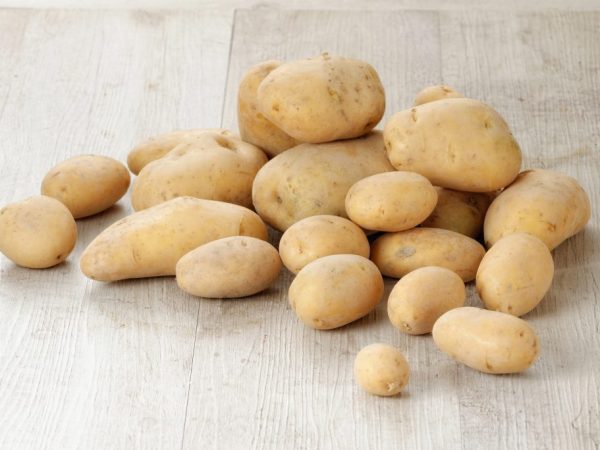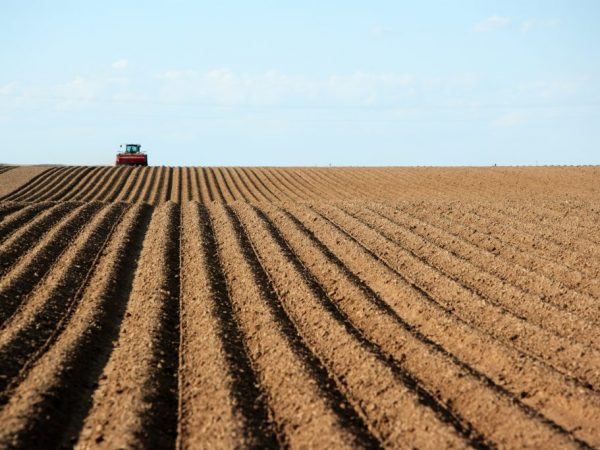Characteristics of Crohn's potatoes
It's hard to believe that potatoes became a regular guest on our table a little over three hundred years ago. Potatoes have come a long way before being recognized as one of the staple plant foods. Crohn's potatoes are a classic of this species.

Characteristics of Crohn's potatoes
He helped to overcome the frequent cases of famine in medieval Europe, and is rightfully the second bread. It's funny that at first the tubers of this plant were used mainly for making moonshine. Nowadays, potatoes in various forms are included in the menu of any national cuisine. Dishes made from her tubers are appropriate both on the table of a poor man and an aristocrat.
Features of the variety
The German agricultural company Bavaria-Saat GbR, which specializes in potato growing, has bred the unique Crohn table potato through years of selection.
Crohn (Krone) is a medium-early ripening variety. It has a relatively short growing season - the full cycle of plant development from planting to harvesting is 100-120 days. Medium height shrub with moderate green mass. Ideal for hobby and industrial cultivation on sandy, loamy and light chernozem soils. Possesses high productivity: the yield of tubers ranges from 450 to 600 centners per hectare, depending on weather conditions and the climatic zone of cultivation.
Characteristics of potatoes
- large, even tubers of regular oval shape, with an average size of 5 cm;
- do not boil down and retain their shape during heat treatment;
- the pulp is juicy, yellow;
- the taste is rich, not watery;
- moderate starch content 12-14%;
- ideal for a wide variety of dishes, especially French fries.
Advantages and disadvantages
Crohn's is one of the most unpretentious agricultural crops. It is grown in all climatic zones, from the cold Arctic to the hot deserts of Asia and Africa.
Breeders around the world have created high-yielding varieties of this plant that have excellent taste and can grow on different types of soil.
The main advantages of the Crohn variety are:
- low demands on soil fertility;
- the ability to tolerate a lack of moisture and a short-term increase in temperature;
- a small number of substandard tubers in the bush.
- high resistance to diseases and pests;
- excellent keeping quality: the safety of the crop during long-term storage reaches 96%;
- tubers resist mechanical stress well and are almost not damaged during packing and transportation.
The description of the benefits speaks for itself. It is thanks to these qualities that the Crown is in high demand in the market of planting material.
The disadvantages include the tendency to form tubers of irregular shape when grown on dense black soil and rocky soil.Cracking of the surface of the tuber is also possible, with excess moisture in the soil. This happens during rainy summers or when watering too often.
Planting potatoes
In order to grow good and tasty potatoes, you need to make an effort, even though this representative of the nightshade belongs to unpretentious plants. Compliance with all the rules and recommendations guarantees a bountiful harvest.
Soil preparation

Too dry soil is not suitable for planting
Potatoes are planted when the soil warms up to 10 ° C. At lower temperatures, the inhibition of the germination of eyes and the general development of the plant occurs. Despite the fact that potatoes of the Krona variety have a relatively low demand for soil fertility, it is desirable to apply moderate doses of organic fertilizers - about 120 kg / ha.
The soil should be moderately moist. Excessive dryness in the area leads to a slowdown in the germination of tubers, and an increased moisture content leads to decay of the planting material.
Landing
To obtain an earlier harvest and reduce the growing season to 85-100 days, tubers are recommended to germinate before planting. It is imperative to warm up the planting material for several days. To increase resistance to diseases and pests, disinfectants are etched.
Features of the Crown agricultural technology:
- plants are planted at a distance of at least 30–32 cm;
- row spacing should be 65–70 cm;
- planting depth of 4–5 cm;
- Hilling of bushes is carried out 2 times per season;
- periodically weeding from weeds and loosening of the soil are carried out.
For planting, you should choose only healthy tubers. You should not purchase planting material in questionable places, because it can be infected with phytophthora or dry rot spores. When they get into the soil, the entire crop is automatically infected. Disinfecting the site, then it will be very difficult.
Potato care
The crown does not require special care and is perfect for weekend summer residents. With such minimal physical costs, you can grow really good potatoes.
Watering
The variety tolerates a lack of moisture well and short periods of drought. However, during the budding period, moderate watering is required to obtain a high yield. Low soil moisture can contribute to "peas", ie. the formation of a large number of small tubers uncharacteristic for this variety and a deterioration in their taste.
It is advisable to irrigate along the furrows, directly under the root system of the plants. The ingress of water on the leaves and stems can provoke an outbreak of late blight.
Fertilizer
Crohn's potatoes do not require frequent feeding, but a moderate introduction of organic matter and mineral phosphates gives a significant increase in the yield and an increase in the consumer properties of tubers. As an organic fertilizer, mature humus and wood ash are the best.
The introduction of high-speed nitrogen-containing organic and mineral fertilizers is not recommended. The increased nitrogen content leads to a large overgrowth of bushes and a decrease in the keeping quality of tubers.
Treatment against pests and diseases
The plant is quite resistant against diseases of common scab, viral infections, potato cancer. The relatively short growing season does not allow it to become infected with late blight, the peak of which occurs in the second half of summer.
Despite the high resistance to diseases common for most varieties, as a preventive measure, pre-plant disinfection treatment of tubers and spraying of developing plants with copper preparations is carried out. In the fight against the Colorado potato beetle and the golden nematode, special insecticides are used. A good effect in the fight against insect pests is given by regular weeding.
Conclusion
Agricultural specialists and organizations engaged in the sale of their products give only a positive characteristic to the Crohn variety potatoes. The products are convenient for packing and transportation, since the tubers are approximately the same size, regular shape and resist mechanical damage well.
This variety is promising for growing in all climatic zones. Crohn's potatoes will delight you with a high yield and a wonderful spicy taste of dishes prepared from it. The description and characteristics fully correspond to the list declared by the breeders.


